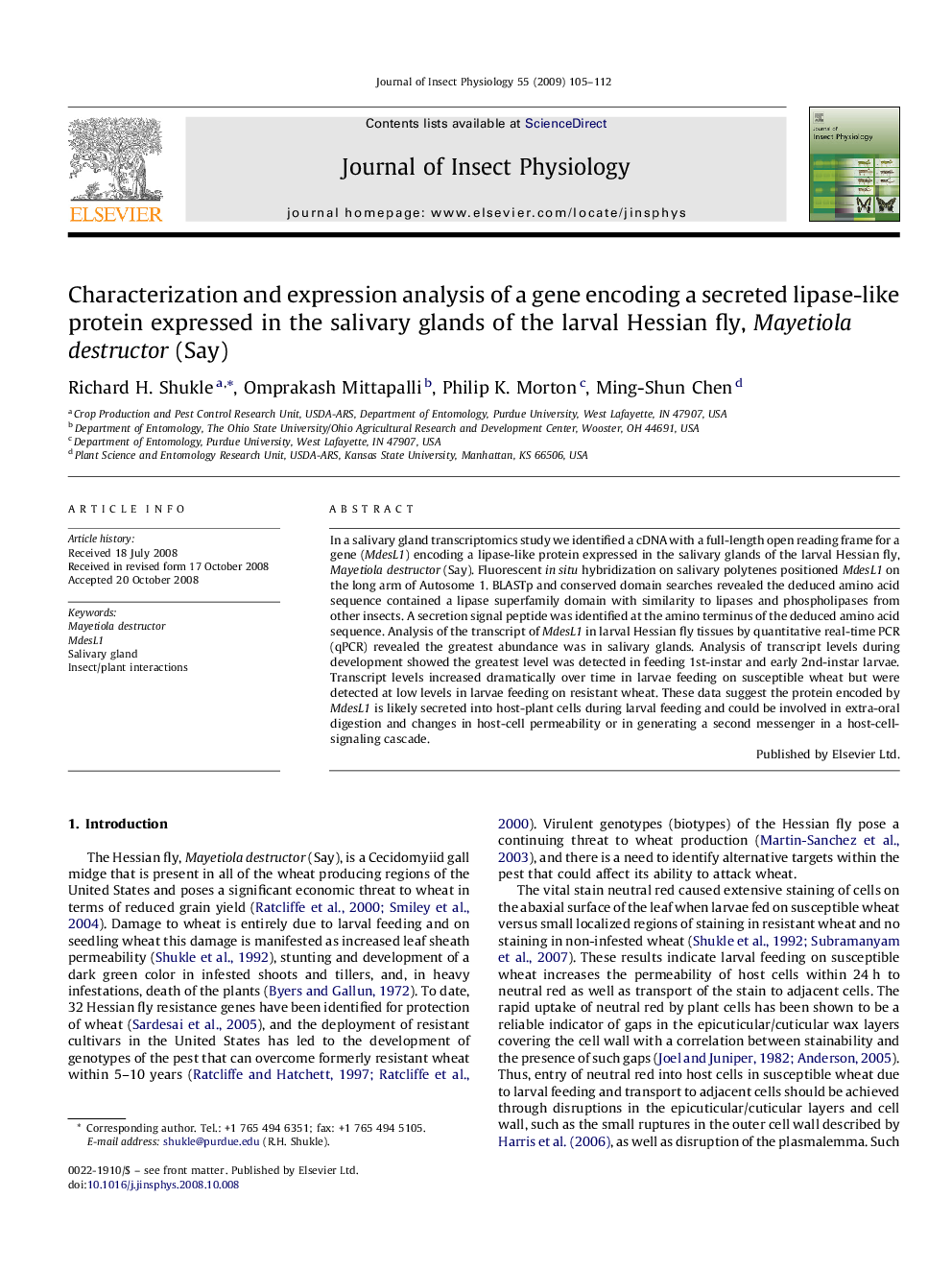| Article ID | Journal | Published Year | Pages | File Type |
|---|---|---|---|---|
| 2841212 | Journal of Insect Physiology | 2009 | 8 Pages |
In a salivary gland transcriptomics study we identified a cDNA with a full-length open reading frame for a gene (MdesL1) encoding a lipase-like protein expressed in the salivary glands of the larval Hessian fly, Mayetiola destructor (Say). Fluorescent in situ hybridization on salivary polytenes positioned MdesL1 on the long arm of Autosome 1. BLASTp and conserved domain searches revealed the deduced amino acid sequence contained a lipase superfamily domain with similarity to lipases and phospholipases from other insects. A secretion signal peptide was identified at the amino terminus of the deduced amino acid sequence. Analysis of the transcript of MdesL1 in larval Hessian fly tissues by quantitative real-time PCR (qPCR) revealed the greatest abundance was in salivary glands. Analysis of transcript levels during development showed the greatest level was detected in feeding 1st-instar and early 2nd-instar larvae. Transcript levels increased dramatically over time in larvae feeding on susceptible wheat but were detected at low levels in larvae feeding on resistant wheat. These data suggest the protein encoded by MdesL1 is likely secreted into host-plant cells during larval feeding and could be involved in extra-oral digestion and changes in host-cell permeability or in generating a second messenger in a host-cell-signaling cascade.
